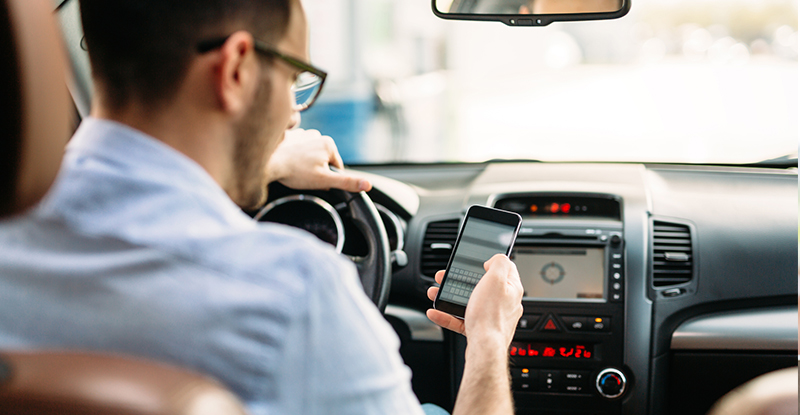Distracted driving: A deadly problem

We would all like to think that we are attentive and competent drivers. But operating a motor vehicle demands constant vigilance to remain safe under even the most perfect conditions. And let’s face it, there are many distractions steering our eyes off the road. Add in problematic behaviors like speeding, not using a seat belt, and alcohol —and you have a recipe for disaster or even death.
Distracted driving is a serious issue in the United States. It occurs when a driver diverts their attention from driving to some other activity such as eating, using a cell phone, watching a movie, or even talking to a passenger. There are three types of distractions:
- Visual: Causes a driver to take their eyes off the road
- Cognitive: Causes a driver to take their mind off driving
- Manual: When a driver takes their hands off the wheel
In 2013, 32,719 people died in motor vehicle crashes. According to the Centers for Disease Control and Prevention, every day in the United States more than nine people are killed and more than 1,153 people are injured in crashes that involve distracted driving.
In 2013 this accounted for:
- 10% of all fatal crashes.
- 18% of all injury crashes.
- 16% of all police-reported motor vehicle crashes.
According to the official U.S. government website for distracted driving, Distraction.gov, texting while driving is a serious and growing problem in America.
Consider these statistics:
- 5 seconds is the average time your eyes are off the road while texting. At 55 MPH, that’s an entire football field of coverage.
- 49% of adults say they have been passengers when a driver was texting.
- 49% of drivers under the age of 35 text while driving.
- 78% of young people say they have read a text while driving.
- 71% of young people report that they have sent a text while driving.
- Drivers ages 15 to 19 have the largest portion of drivers distracted at the time of crashes, about 10%.
- 55% of young adult drivers claim it’s easy to text while driving.
- 77% of young adult drivers are somewhat confident that they can safely text and drive.
- 1 in every 5 drivers admits to surfing the web while driving.
Nobody plans to cause a crash, yet every time we engage in distracted driving we take a risk. Even if we think we are safe drivers and nothing bad will happen.
So what can be done? The easiest way to get started is to take the pledge to drive distraction free. As a passenger, you can ask your driver to stay distraction free too. Try these tips for sticking to your pledge:
- Leave your cell phone in a secure place. If you must answer, pull over and attend to the call or text.
- Avoid eating and drinking while on the road. Either add time to eat a snack before driving or wait until you arrive.
- Do not partake in other distractions such as putting on make-up, reading the newspaper, watching a movie, turning around to address children, or anything else that takes your eyes off the road while driving.
- As a passenger, you can help your driver avoid becoming distracted. You can offer to help:
- Operate the GPS or electronic navigation device.
- Make an important phone call.
- Reply to a text.
- On a long road trip, stop for breaks so the driver can attend to eating, texting, talking, or other possible distractions.
Making the roads safer for everyone starts with each of us. What will you do to protect drivers, passengers, pedestrians, and cyclists today?



